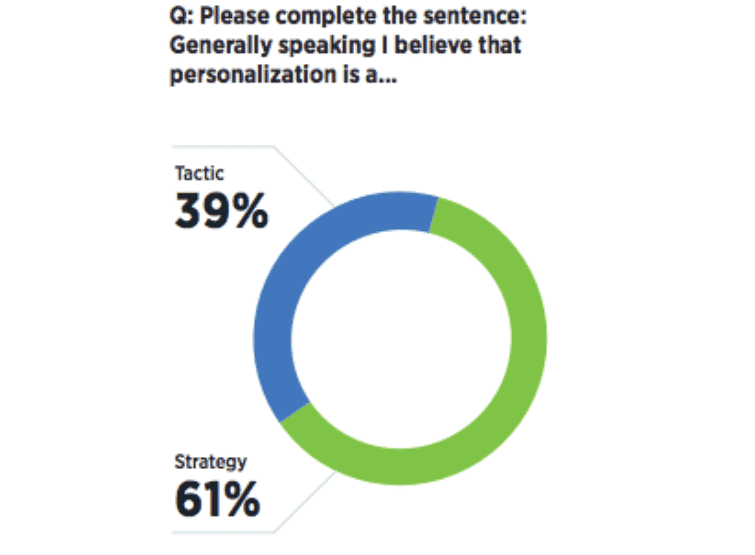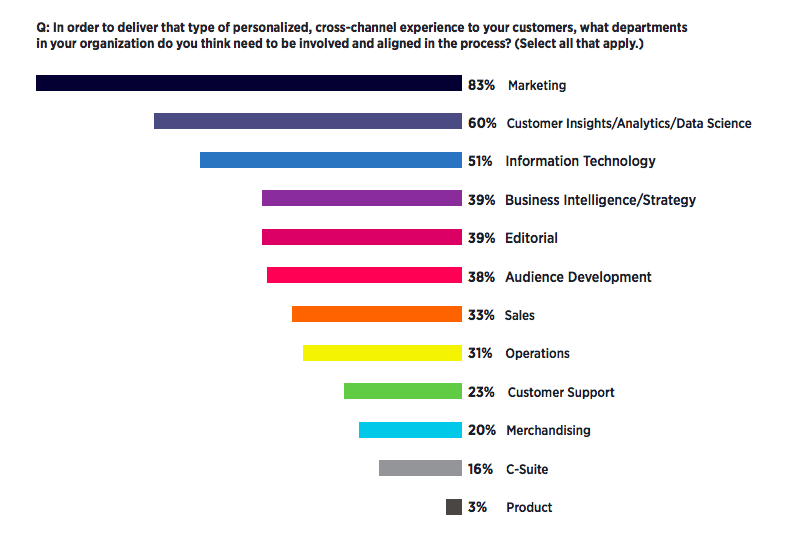Article
Personalization Strategy Resources for Implementation
March 13, 2018

The arguments for publishers and retailers to make personalization a core business strategy are becoming too strong to ignore. Boston Consulting Group provides one of the more compelling data points, predicting that companies that are fully invested in all types of personalization by 2018 will be outselling their competitors by at least 30%. Companies that are investing in personalization are already seeing revenues grow two to three times as fast as competitors that are lagging in adoption.
Still, many companies seem to think that a comprehensive personalization strategy — and its implementation — is beyond their grasp. Sailthru conducted a recent survey of 146 marketers in publishing, retail, and ecommerce, and found that 42% of marketers said their personalization efforts are hindered by a lack of resources.
On the one hand, we’re sympathetic to these claims. Every marketer feels constant pressure to do more with less and constantly pressure to meet their quarterly numbers.
But these complaints about available resources are symptomatic of a bigger problem. They show a reliance on short-term thinking, and personalized marketing is not a short-term initiative. According to our survey, 61% of marketers consider personalization a business strategy. We agree, wholeheartedly. On the other hand, 39% think of personalization as a tactic. We’re pretty sure that, as those marketers get deeper into personalization, they’ll come to understand its power as a business strategy, too.

Start Thinking Long-Term
If a marketer can’t implement an important business strategy because of a lack of resources, you’d expect him or her to do what any other proactive manager would do: Strategize. Lobby. Understand how his or her needs intersect with those of other departments. Get the C-suite involved. In short: Get those resources their own budget line.
It doesn’t make any sense, in the middle of August, to try to squeeze resources for personalization out of the already-squished third-quarter budget. Personalized marketing is an ongoing project and requires adequate funding, just like any other business priority. That means leaders need to get it into budget, just like they would for anything else that’s going to lead to sustainable, profitable growth.
To successfully implement a personalized marketing strategy, all sorts of different teams need to come together. Our study found that 60% of marketers expect that, when it comes to personalization, they’ll be working with colleagues in customer insights or analytics. About half – 51% – want more involvement and alignment from the folks in information technology.

But that’s just the beginning. Thirty-nine percent wanted the business intelligence or strategy groups involved; 39% thought they should work with editorial colleagues, and 38% mentioned audience development. A significant number of study participants also cited sales, operations, and customer support.
All this collaboration doesn’t happen by chance. It takes time and planning. Marketers must figure out what their personalization strategy would look like if fully implemented. They then need a road map to get there.
That’s not a short-term process. Like any other business strategy, it takes time, planning, and an ongoing commitment. But for anyone who needs to succeed in the world of omnichannel commerce, it’s well worth the investment.
The State of Brand Loyalty in the U.S. in 2023
Related



